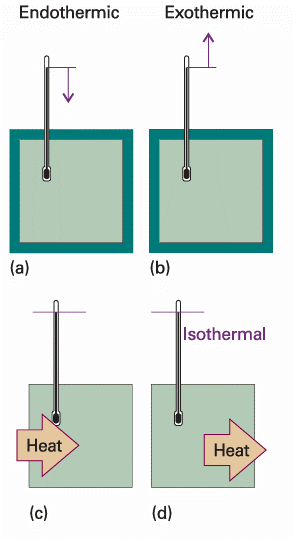
Work, heat, and energy
 المؤلف:
Peter Atkins، Julio de Paula
المؤلف:
Peter Atkins، Julio de Paula
 المصدر:
ATKINS PHYSICAL CHEMISTRY
المصدر:
ATKINS PHYSICAL CHEMISTRY
 الجزء والصفحة:
ص29-30
الجزء والصفحة:
ص29-30
 2025-11-01
2025-11-01
 639
639
Work, heat, and energy
The fundamental physical property in thermodynamics is work: work is motion against an opposing force. Doing work is equivalent to raising a weight somewhere in the surroundings. An example of doing work is the expansion of a gas that pushes out a piston and raises a weight. A chemical reaction that drives an electric current through a resistance also does work, because the same current could be driven through a motor and used to raise a weight. The energy of a system is its capacity to do work. When work is done on another wise isolated system (for instance, by compressing a gas or winding a spring), the capacity of the system to do work is increased; in other words, the energy of the system is increased. When the system does work (when the piston moves out or the spring unwinds), the energy of the system is reduced and it can do less work than before. Experiments have shown that the energy of a system may be changed by means other than work itself. When the energy of a system changes as a result of a tempera ture difference between the system and its surroundings we say that energy has been transferred as heat. When a heater is immersed in a beaker of water (the system), the capacity of the system to do work increases because hot water can be used to do more work than the same amount of cold water. Not all boundaries permit the transfer of energy even though there is a temperature difference between the system and its surroundings. An exothermic process is a process that releases energy as heat into its surroundings. All combustion reactions are exothermic. An endothermic process is a process in which energy is acquired from its surroundings as heat. An example of an endothermic process is the vaporization of water. To avoid a lot of awkward circum locution, we say that in an exothermic process energy is transferred ‘as heat’ to the surroundings and in an endothermic process energy is transferred ‘as heat’ from the surroundings into the system. However, it must never be forgotten that heat is a process (the transfer of energy as a result of a temperature difference), not an entity. An endothermic process in a diathermic container result in energy flowing into the system as heat. An exothermic process in a similar diathermic container result in a release of energy as heat into the surroundings. When an endothermic process takes place in an adiabatic container, it results in a lowering of temperature of the system; an exothermic process results in a rise of temperature. These features are summarized in Fig. 2.2.

Fig. 2.2 (a) When an endothermic process occurs in an adiabatic system, the temperature falls; (b) if the process is exothermic, then the temperature rises. (c) When an endothermic process occurs in a diathermic container, energy enters as heat from the surroundings, and the system remains at the same temperature. (d) If the process is exothermic, then energy leaves as heat, and the process is isothermal.

 الاكثر قراءة في مواضيع عامة في الكيمياء العضوية
الاكثر قراءة في مواضيع عامة في الكيمياء العضوية
 اخر الاخبار
اخر الاخبار
اخبار العتبة العباسية المقدسة


